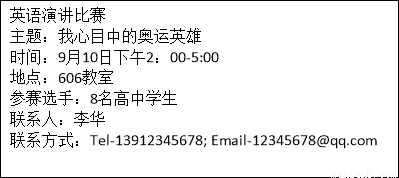题目内容
With more recognition than Halloween and less than Christmas, Valentine’s Day as an imported festival faces a dangerous situation in China, where it’s caught between forces of tradition and fashion. Valentine’s Day has a natural enemy in China. And it is not the Chinese equivalent, which falls on the seventh day of the seventh month on the lunar calendar, usually around half a year away from Feb. 14. It is the Spring Festival, also known as the Chinese New Year, that will influence the Feast of Saint Valentine.
The real disagreement between East and West probably took place over a century ago, when China’s door was forced open by Western powers and Chinese scholars supported westernization as a means to strengthenour nation’s ability to compete. The introduction of the solar calendarand Western measurements was both an acknowledgment of their influence and an effort to be accepted by the world order.
For a full century, we have had two systems running in parallel. When it comes to the eventual outcome, practicality usually beats all other concerns. Laws can help, such as the three traditional festivals of Tomb Sweeping, Dragon Boat and Mid-Autumn gaining legal status in 2008 and giving every Chinese citizen a day off, but laws cannot push what people have no feelings for. So, the celebration or boycott of imported holidaysor homegrown ones should be no cause for worry. If they are irrelevant, no social media will change the public’s mind; and if they are accepted, there must be a need which they happen to satisfy.
Since we have no global Qin Shihuang to force one system on every country, we can always rely on a dual(双重) approach by which we share with the outside world on one hand but preserve our own ways of life on the other.
1. What does the author say about Valentine’s Day in China?
A. It is better received than Christmas.
B. It brings potential danger to people.
C. It becomes increasingly popular.
D. It happens to have a natural enemy.
2. The underlined word “equivalent” in the first paragraph refers to ________.
A. theChinese Valentine’s Day
B. theSpring Festival
C. fashion
D. custom
3. Which of the following can decide what to celebrate according to the author?
A. Laws. B. Media. C. Needs. D. Tradition.
4. The author believes that ________.
A. the conflict between East and West causes more trouble
B. two different systems of festivals can co-existin China
C. westernization is a symbol of a nation’s competitive ability
D. homegrown festivals are more important than imported ones


